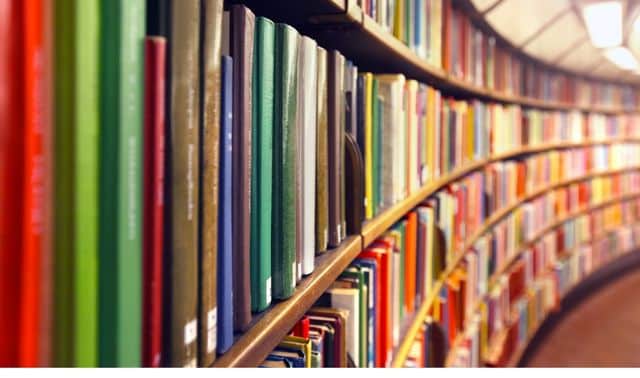Sign up for the Family Tree Newsletter! Plus, you’ll receive our 10 Essential Genealogy Research Forms PDF as a special thank you.
Get Your Free Genealogy Forms
"*" indicates required fields
You don’t have to travel to Washington, DC, to tap most of its genealogical treasures such as the National Archives—but nothing beats a trip to the nation’s capital for putting you in touch with history, family and otherwise. And don’t let your research quest keep you from seeing a bit of the city while you’re there. Washington, after all, is perhaps the only city in the world to list government and tourism as its top two industries.
Before you get down to actual research, take time to tour the National Archives building (800-234-8861, www.nara.gov/nara/dc/Archives1_directions.html). It’s located at 700 Pennsylvania Ave. NW, between Seventh and Ninth Streets NW. The research entrance is on Pennsylvania Avenue; you enter the Exhibition Hall on Constitution Avenue. Admission is free. Among the exhibits, of course, you’ll see the Constitution and the Declaration of Independence. But some of the other pieces may surprise you: The Magna Carta, which is owned by Ross Perot, and the gun that Lee Harvey Oswald allegedly used to assassinate President John F. Kennedy are both housed here and are sometimes on display.
When visiting Washington, it makes sense to leave your car at home. Parking is tough to come by legally and the city’s good things come in clusters. Plan to walk a lot and use the city’s subway system, the Metro. The Metro is clean, cost-efficient ($5 for an all-day pass) and will get you to most places that you want to go. The National Archives building is right off of the Archives/Navy Memorial stop on the Yellow or Green Line. A map can be found on the Metro’s Web site at www.wmata.com. The only drawback of the Metro is that the system shuts down around midnight on most weeknights. Late nights will require springing for a cab, which charge by an archaic zones-traveled-through system instead of a time or distance fare.
Some monuments—such as the new FDR memorial—are quite a hike from the Metro, though. Your best bet for these is a Tourmobile pass, which lets you get on and off at any or all of its 24 stops (www.tourmobile.com).
The other must-sees for family history buffs are the Library of Congress and the Smithsonian Institution. The library, which celebrated its 200th birthday this year (see “A Voluminous Celebration”), holds 112 million items on 530 miles of bookshelves in its three massive buildings, which are named after Library of Congress founder Thomas Jefferson, James Madison and John Adams. It’s located at 101 Independence Ave. SE; researchers should use the Second Street entrance to the Jefferson Building (202-707-5000, www.loc.gov). Admission is free. Use the Capitol South Metro stop (Blue and Orange Lines).
The Smithsonian (www.si.edu) includes 14 museums in Washington, DC, and the National Zoo. Its National Museum of American History, at 14th Street and Constitution Avenue NW (202-357-2700, americanhistory.si.edu), has a collection ranging from the “Star-Spangled Banner” flag to Judy Garland’s ruby slippers from The Wizard of Oz. It’s truly “the nation’s attic.” Admission is free. Use the Smithsonian or Federal Triangle Metro stops (Blue and Orange lines).
Take time to explore the 150,000 volumes and 53,000 microforms of genealogical material at the Daughters of the American Revolution Library, 1776 D St. NW (202-879-3229, dar.library.net). The library is open to researchers weekdays and Sunday afternoons for a fee of $2-$5 (except during the group’s annual meeting in mid-April and holidays). Use the Farragut West Metro stop (Orange and Blue lines).
Among the city’s newer museum attractions is the United States Holocaust Memorial Museum, 100 Raoul Wallenberg Place SW (800-400-9373, www.ushmm.org, Smithsonian Metro stop), which offers a somber but important look at history. Admission is free but timed. Since all tickets are frequently gone by noon, consider calling ahead to reserve (a small fee is charged). Please think twice before taking small children to this powerful, harrowing museum.
Another popular new museum is across the Potomac in Arlington, Va., the Newseum, 1101 Wilson Blvd. (888-NEWSEUM, www.newseum.org). This museum chronicles the history of news through interactive exhibits. You can try your hand at being a news anchor or test your journalistic ethics. Admission is free. Use the Rosslyn Metro stop (Blue and Orange lines). (The Newseum recently announced plans to move to an expanded site at Pennsylvania Avenue and Sixth Street NW.)
Check out washingtonpost.com/wp-srv/entertainment/art/museumlist.htm for a handy guide to Washington’s cornucopia of museums.
Jim Faber is a former Family Tree Magazine editorial assistant.




